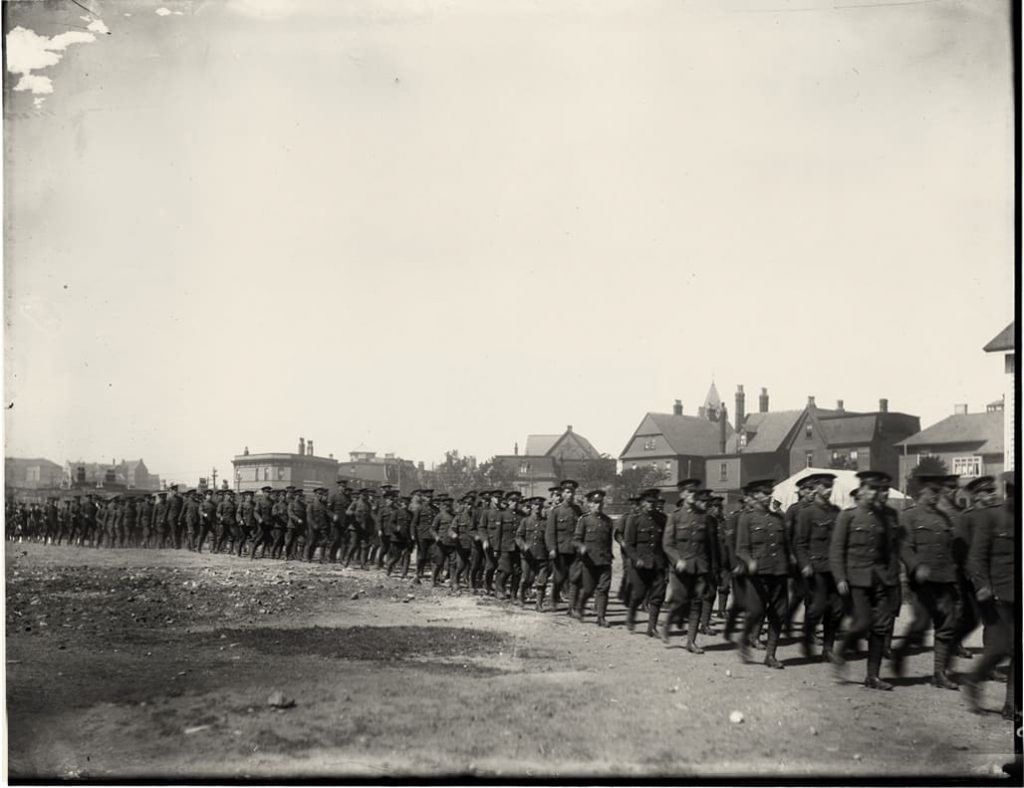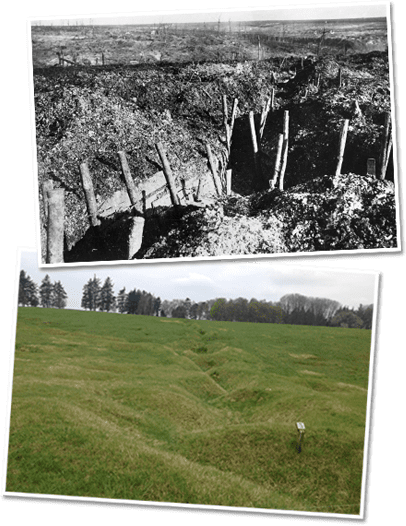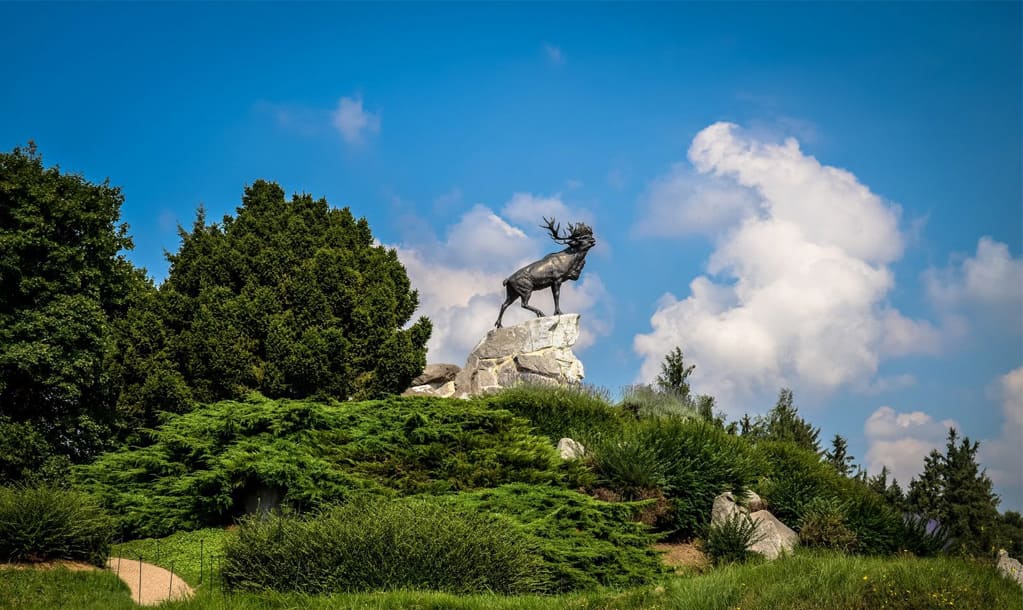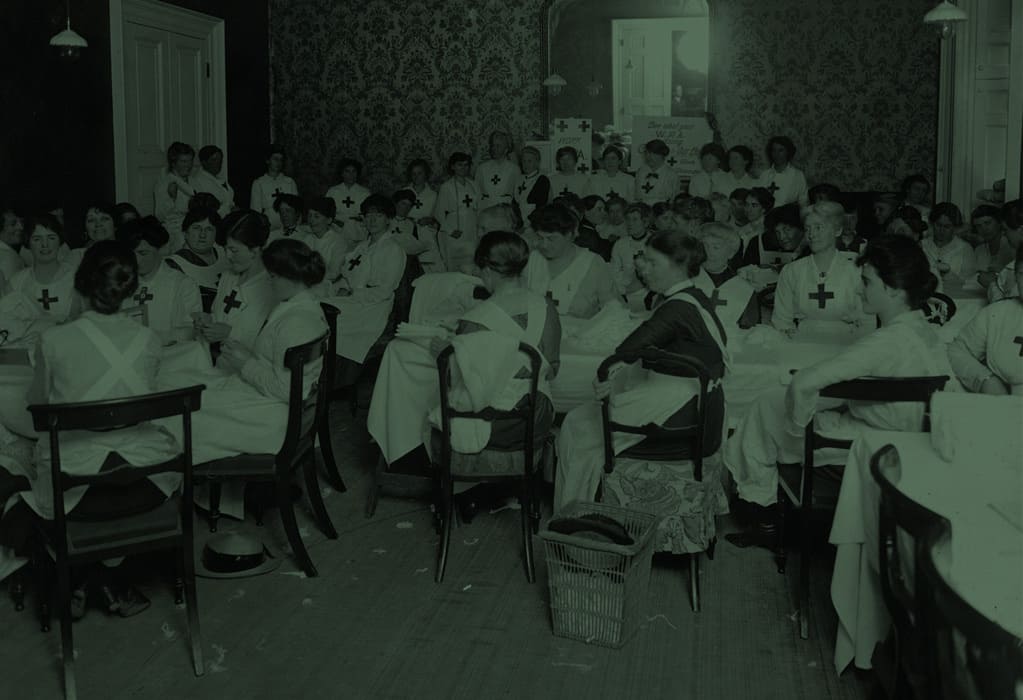When war was declared on August 4, 1914, the only trained military force in the then Dominion of Newfoundland was a 600-man Newfoundland Royal Naval Reserve. There wasn’t even a local army militia, let alone a full-fledged regiment.
That was to change significantly in the weeks, months and years to come.


From the time the first 107 Newfoundland Royal Naval Reservists left St. John’s, on September 6, to the end of the war in November 1918, nearly 12,000 Newfoundlanders and Labradorians enlisted in the Newfoundland Royal Naval Reserve, Newfoundland Regiment, Newfoundland Forestry Corps, the Royal Flying Corps, as well as the Canadian Expeditionary Force. With a population of less than 250,000, this represented 35.6 percent of men between the ages of 19 and 35. Another 505 were known to have served in the Newfoundland Mercantile Marine.
The Newfoundland Regiment in particular has been recognized for its efforts at a number of major First World War battles:
- Battle of the Somme (Beaumont-Hamel, 1916):
780 of our men went over the top on July 1; only about 110 survived unscathed, of whom only 68 were available for roll call the following day. The unit as a whole suffered a casualty rate of approximately 80%. - Gueudecourt (Battle of Le Transloy, 1916):
Our soldiers played a decisive role in the capture of a German strong point near Gueudecourt. - Monchy-le-Preux (Battle of Arras, 1917):
After losing 485 men in one day, the 9 of our remaining soldiers, along with one British soldier, held off more than 200 Germans for ten hours. - Masnières (Battle of Cambrai, 1917):
Our soldiers were successful in seizing and holding a strategic bridgehead at Masnières. - Battle of Courtrai (Kortrijk, 1918):
In one day the Regiment captured 500 German prisoners and 94 machine guns. It was also where 17-year-old Private Thomas Ricketts of Middle Arm, White Bay became the youngest solider in the British Army to receive the Victoria Cross.

The Newfoundland Regiment was the only regiment to receive the prefix ‘Royal’ during the First World War, and it was only the third time during hostilities that such an honour was awarded in the history of the armies of the British Empire. It also has the distinction of being the only North American regiment to see action at the Battle of Gallipoli, Turkey, 1915, and was awarded its first gallantry awards for their efforts in the skirmish at Caribou Hill.
After the war effort, five bronze caribous were erected to honour our soldiers who fought and died in Europe.
On the home front, the Women’s Patriotic Association was organized on August 31, 1914, by Lady Davidson, wife of Governor Davidson, to support the war effort through fundraising and by knitting socks, scarfs, waistcoats and helmets for Newfoundland’s soldiers. By December 1914, 15,000 women in 218 branches volunteered to be part of the Women’s Patriotic Association activities. Their contribution was invaluable to our troops overseas.

Another 38 of our women also served in the Volunteer Aid Detachment, an organization of semi-trained nurses, who assisted with medical services overseas.
